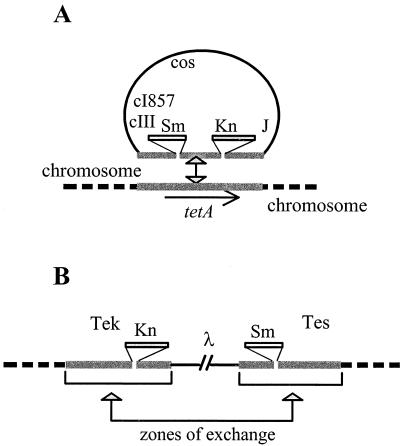FIG. 2.
Prophage excision assay. (A) System for monitoring indigenous recombination. Phage λTSK carries a 2.8-kb tetAR (Tcr) fragment from Tn10 interrupted within tetA by two insertions providing kanamycin resistance (Knr) and streptomycin-spectinomycin resistance (Smr). It can recombine with a resident tetAR sequence and inactivate the Tcr character to form a Tcs lysogen. Owing to the cI857 mutation, the prophage is repressed only at a low temperature (30°C). It is induced and kills its host at 42°C. (B) Prophage loss after excisive recombination between the flanking repeats restores the ability to form colonies at 42°C, so that the number of temperature-resistant bacteria present in a clone derived from a single lysogen is a measure of prophage excision frequency when lysogens and nonlysogens display the same generation time, which is the case in CDR− mutants.

